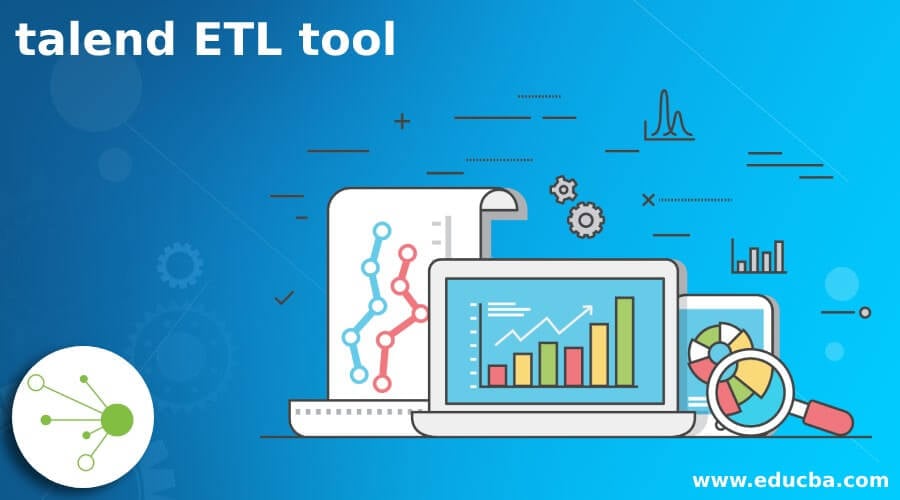Updated July 3, 2023

Introduction to ETL
Here ETL stands for extract, transform, and load; this helps the business to gather the data. It plays an important role in data integration strategies. With the help of ETL, we can easily load the data from different locations and load them into a single centralized location. Also, it helps us to handle the different types of data together. ETL follows a process that includes collecting data from different sources and refining this data collected; in the end, it delivers the data to the different warehouses. With the help of this, we can easily migrate our data to different destinations, sources, and tools. In short, ETL helps and plays an important role in business intelligence to collect data. In this Talend ETL tool article, we will see how it works in detail for better understanding with more clarity by the article ends for beginners.
List of Talend ETL Tools
As we already know what ETL is, it generally helps us extract and transform the data and load it to a single centralized location that the business intelligence can use. In this section, we will discuss all the different types of ETL tools we have in place that can be used for data integration; let’s look at each in detail for better understanding.
- FlyData: This is also one of the data integration platforms based on the cloud. With the help of this, we can replicate the data from various sources and load them inside Snowflake, Amazon Redshift, and S3. Also, this tool is considered the fastest and most frequently used, with reliability and speed. This product differentiates the time it will take to set up the data replication and the speed at which it loads the data. Because of this reliability and speed, it is recommended by most companies that reliability and speed matter while doing data integration. Also, they have strong customer support.
- Talend ETL Tool: As we already discussed, ETL is a data integration strategy that helps us to collect data, as the name suggests, to extract, transform, and load data which means it performs the following operations, as briefly described below for better understanding see;
- Extract: This step extracts important information from different sources or destinations. This may include different types of handles. So by this, we can easily handle different data types together.
- Transform: As the name suggests, the second helps us to transform the data, which includes migration of data to different destinations, tools, etc.
- Load: As the name suggests here, we can say the last step for ETL, which helps us load the data to the centralized location.
These steps are a very short description of ETL and what are the major components involved in it. As we have seen, it is an open-source data integration solution to the problem. Also, it is compatible with both data sources on the on-premises and in the cloud, making it the better choice for data integration from different sources. Also, we opt for the paid version of Talend ETL; it will give us more features that will help manage and monitor productivity and data governance.
- Xplenty: This is also one of the solutions for data integration and a good ETL tool; it is also a cloud-based tool. That helps us to gather data from multiple sources. It helps us with a simple visual interface. That helps us in building our pipelines that can be between a large number of destinations and sources. If we talk about the usage, then more than 100 popular SaaS-based applications are using Xplenty, in short, packaged using Xplenty, which includes Amazon Redshift, Facebook, MongoDB, Salesforce, MySQL, QuickBooks, Slack, and many more are there. It offers us high security and scalability with great customer support in case of any issue. Using this, we can easily encrypt and decrypt our data field, which is another advantage of Xplenty.
- Oracle Data Integrator Tool: This is a comprehensive data integration solution for the Oracle data management ecosystem. The current users of the Oracle application can use this. It is often termed ODI and supports both cloud-based and on-premises applications. It supports ELT.
- Informatica PowerCenter: We also widely use this ETL tool, which is a vibrant data integration tool. It provides us with good compatibility and high performance with the different data sources from which we want to integrate the data; it also supports both databases: non-SQL and SQL. It also has good customer support in case of any issues. One of the negative sides of this tool is that it has high prices, with deep learning about it, so small organizations need a highly technical developer.
- Fivetran: This tool is also one of the cloud-based solutions we have for data integration, with support for Azure, Redshift, Snowflake, and BigQuery data warehouses. If we talk about the benefits of this tool, it has very good support for the rich array of data sources. Also, it can add our custom integration without much hustle. It is also very easy to use and has a simplicity which makes it a good choice for data integration as a tool.
- Pentaho: Hitachi Vantara offers this open-source platform, which can be considered for data integration and analytics. It has two versions, commercial and community. Community one is the free own and commercial we have to purchase. It also offers a user-friendly interface to us, which helps beginners build robust pipelines. But it has a few drawbacks, like very limited templates.
Recommended Articles
We hope that this EDUCBA information on “Talend ETL Tool” was beneficial to you. You can view EDUCBA’s recommended articles for more information.
